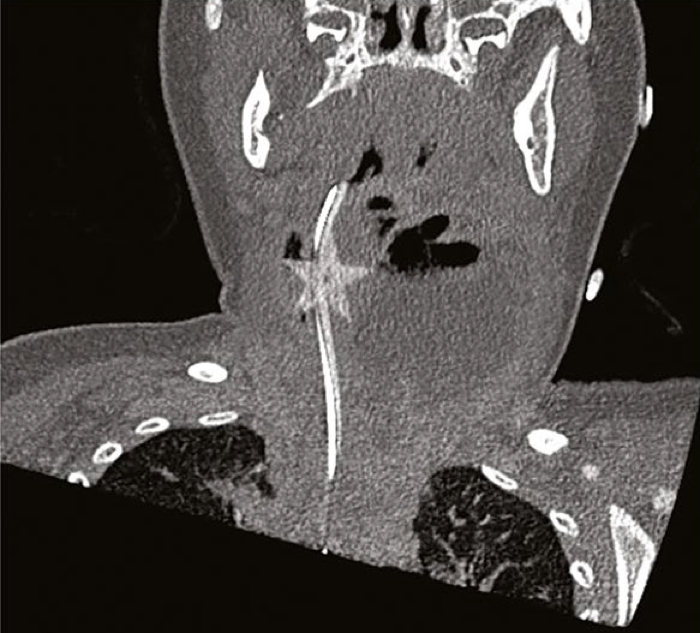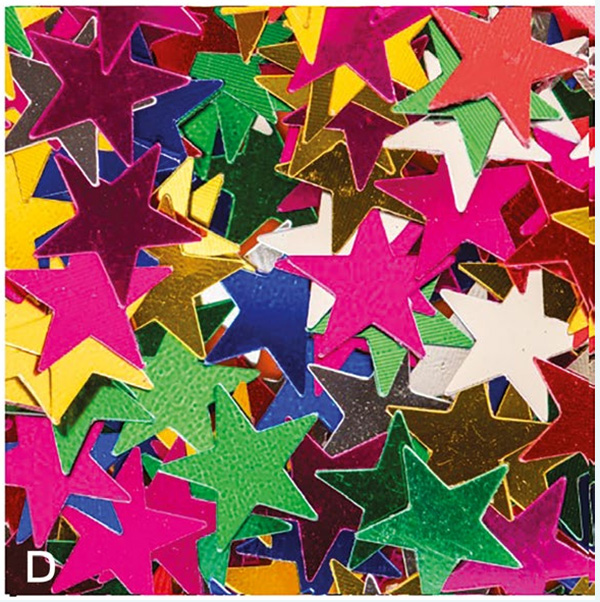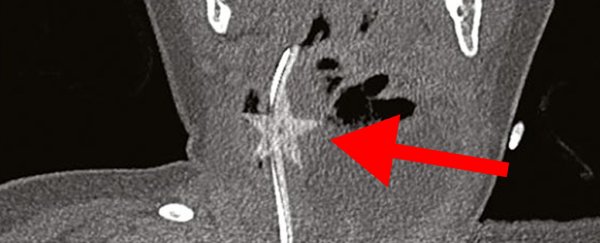It's beginning to look a lot like Christmas. That means gift shopping, wrapping presents, preparing your tree, and oodles of shiny Yuletide decorations as far as the eye can see.
Unfortunately, as a thought-provoking new case report illustrates, not all that sparkling glitz is entirely safe to have around. Specifically, for the very young among us, even a single confetti star can actually pose a dangerous choking hazard (or worse).
In a case note published in the Medical Journal of Australia, doctors report the experience of a nine-month-old infant who was brought into hospital after a serious choking episode, in which the girl's mother noted streaks of blood in her child's saliva.
Such a symptom would be enough to make any parent seriously alarmed, but subsequent examination of the girl revealed nothing remarkable in her condition, and the mother hadn't witnessed her daughter inhaling or ingesting anything unusual.
Without more to go on, the little girl was discharged, with doctors concluding she must have simply choked on her own saliva.
Just two days later, though, the patient was back at hospital, experiencing laboured breathing, fevers, coughing, and reduced appetite.
Physical examination revealed she had an abnormally high respiratory rate of 68 breaths per minute and a reddened throat, and was also wheezing intermittently. The girl was admitted to hospital, with doctors thinking she might have a viral bronchiolitis infection – but the true cause of her issues still went unnoticed.
It was only after she presented again several days later with even worse symptoms – now including lethargy, reduced blood flow, and a mass in the left side of her neck – that the source of the patient's worsening condition was identified.
Ultrasound and CT scans revealed a large mass of pus (called a retropharyngeal abscess) in the back of her throat, narrowing her airways – and it wasn't alone.
As a CT reconstruction clearly shows, a distinctly star-shaped object was also present in the little girl's throat, lurking at the margins of the abcess: a five-pointed confetti star, embedded in the delicate tissue of her windpipe.
 CT reconstruction showing confetti star lodged in throat. (Heyworth & Shulman, MJA, 2019)
CT reconstruction showing confetti star lodged in throat. (Heyworth & Shulman, MJA, 2019)
While it's easy to overlook the dangers posed by these tiny decorative pieces, in a case like this, the hidden risks inherent in their spiky, colourful designs become alarmingly clear.
"Despite their flexible nature, the sharp points of confetti stars appear to increase the risk of lodgement in the upper aerodigestive tract, and their reflective surfaces attract the interests of young children with a propensity to place things in their mouths," the researchers, led by first author and radiologist Paul Heyworth from Gold Coast University Hospital, explain in their case note.
"While uncommon, the potential for similar cases to present over these Christmas holidays exists."
 (Heyworth & Shulman, MJA, 2019)
(Heyworth & Shulman, MJA, 2019)
In the case of the nine-month-old girl, at least, there was a happy ending. Surgeons performed an emergency incision to drain the abscess and remove the plastic star embedded in the child's posterior hypopharyngeal wall.
Once the confetti obstruction was removed, they kept the patient on antibiotics to make sure no infections took hold after the procedure, and fortunately no complications were reported.
It's a good outcome, ultimately, but the story could have ended differently; the researchers note that people need to be aware of the potential dangers of these decorations to small children, suggesting warning labels on confetti packaging could also be a good idea.
The findings are reported in the The Medical Journal of Australia.
